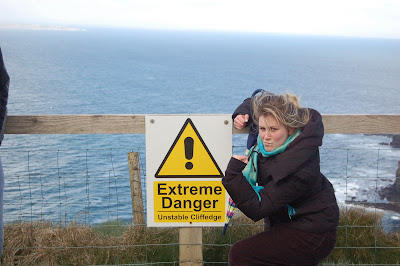
Tuesday, November 30, 2010
Saturday, October 16, 2010
Sunday, October 10, 2010
Look into this
http://www.physics-edu.org/what_is_light.htm
STARLIGHT BENDING AND LENSING EFFECT
http://physics-edu.org/lensing_effect.htm
GRAVITATIONAL LENSING and EINSTEIN RING
http://www.youtube.com/watch?v=yamVbK-J69M&feature=related
PAUL STEINHARDT
http://www.closertotruth.com/participant/Paul-Steinhardt/100
Thursday, October 7, 2010
"Next I want to make a doorbell that sounds like a dying star," Katie Paterson.
http://rhizome.org/editorial/3593
Also
Spencer Finch
http://www.spencerfinch.com/catalogue.php
When a scientist peers into space, either through a standard telescope or with the aid of a fancy space-based observatory, the things she observes emit light energy, called electromagnetic radiation.
Galaxies, nebulae, stars, trees, microscopic bugs and anything else that can be observed glows with energy at one of these wavelengths.
But in recent decades, researchers have become increasingly convinced that there is a vast amount of material in the universe that does not glow at all. This mysterious "dark matter" is believed by most scientists to be the most common stuff in the universe, perhaps making up 90 percent or more of the total mass.
So what is dark matter made of? No one knows for sure.
Normal matter -- you, your computer and the air you breathe -- is made of atoms, which are composed of protons, neutrons and electrons. Scientists call this "baryonic" matter. They suspect some dark matter is of the normal, baryonic variety. This might include brown dwarf stars and other objects that are simply too small, or too dim, to be seen from great distances. But most dark matter is thought to be non-baryonic -- truly strange.http://www.space.com/scienceastronomy/astronomy/dark_matter_sidebar_010105.html A gravitational lens is formed when the light from a very distant, bright source (such as a quasar) is "bent" around a massive object (such as a cluster of galaxies) between the source object and the observer. The process is known as gravitational lensing, and is one of the predictions of Albert Einstein's general theory of relativity. http://en.wikipedia.org/wiki/Gravitational_lens
Sunday, October 3, 2010
via Matthias (danke schon)
http://www.anthonymccall.com/
Marco Breuer (Von Lintel Gallery)
(Izima Kaoru - why can't the corpse be beautiful)
Susan Derges- http://www.susanderges.com/
*Cymatics- http://en.wikipedia.org/wiki/Cymatics
(Look for james Turrel Interviews)
-http://www.pbs.org/wnet/egg/215/turrell/interview_content_1.html
-http://www.conversations.org/issue.php?id=2&st=99-1-turrell
Monday, August 30, 2010
California College of the Arts in San Francisco is pleased to present the fall 2010 lineup of its Graduate Studies Lecture Series.
Jan Verwoert
Thursday, September 23
Jan Verwoert is a Berlin-based art critic and contributing editor to Frieze. In 2009 he presented a series of lectures titled Why Are Conceptual Artists Painting Again? Because They Think It Is a Good Idea at the New Museum, New York, and the Banff Centre, Canada.
Kristee Rosendahl
Tuesday, September 28
In 1985 Kristee Rosendahl pioneered the field of user experience as the cofounder of the Apple Human Interface Group and a principal designer in the Apple Multimedia Lab. She has 25 years of experience in product development, user experience, design, and management for innovative new digital products and applications.
Edgar Arceneaux
Monday, September 30
Edgar Arceneaux’s installation artworks incorporate not only drawing, sculpture, and film, but also music, conceptual art, and science, juxtaposing representative elements of each and opening up newfound associations, unintended connections, interstitial spaces—in his words, "a different way to construct relationships among things."
Barry Lopez
Thursday, October 7 [please note this event starts at 3 pm]
The San Francisco Chronicle has called Barry Lopez "Arguably the nation’s premier nature writer." Lopez is best known as the author of Arctic Dreams, for which he received the National Book Award.
Donald Revell and Claudia Keelan
Thursday, October 7
Donald Revell is a professor of English and director of creative writing at the University of Utah. He is the author of eight collections of poetry, and he has translated two volumes of the poetry of Guillaume Apollinaire. Claudia Keelan is a graduate of Humboldt State University and the Iowa Writers' Workshop, and now director of the MFA program at the University of Nevada Las Vegas. She is the author of five collections of poetry and a letterpress chapbook, and has been published in numerous magazines and journals
Yvonne Yarbro-Bejarano
Thursday, October 14
For several decades Yvonne Yarbro-Bejarano has critically examined cultural representations of Chicana/o queer sexualities, subjectivities, bodies, and desires. Her writings address a variety of media, from literature, visual art, performance, and theater to film and video.
Hunter Lovins
Thursday, October 21
Hunter Lovins proposes that citizens, communities, and companies, working together within the market context, are the most dynamic problem-solving force on the planet. For the past 30 years, as an author and promoter of sustainable development, she has worked to build teams that can create and implement practical and affordable solutions.
Elena Filipovic
Thursday, October 28
Elena Filipovic is the curator at WIELS Contemporary Art Center in Brussels, where she realized the acclaimed Felix Gonzalez-Torres retrospective Specific Objects without Specific Form earlier this year.
Francois Roche
Monday, November 8
Francois Roche is a cofounder of R&Sie(n), an architectural practice based in Paris. The firm’s work is simultaneously organic, biological, and critical, seeking to articulate real and fictional geographic situations as well as narrative structures that can transform them.
Paulina Olowska
Thursday, December 2
Paulina Olowska is CCA's fall 2010 Capp Street Project artist in residence. Her collages, performances, paintings, and neons are influenced by myriad sources: Modernism, Soviet and American propagandist typography, 1960s Pop art, French affichistes, American graffiti art, contemporary fashion, and beyond.
Friday, August 27, 2010
Tuesday, August 17, 2010
NOTE TO SELF>....Revisit These.....
To burn always with this hard, gem-like flame,
to maintain this ecstasy, is success in life.
*the daiphanous hero
*Charles Baudelaire
http://www.arts.gla.ac.uk/STELLA/COMET/glasgrev/issue3/kolo.htm
*Gaston Bachelard - poetics of space
- water and dreams
- fragments of a poetics of fire
*Malleus Maleficarum//bachelard--> the psychoanalysis of fire
Monday, June 21, 2010
the hidden messages in water
We start out life being 99% water as fetuses
When we are born , we are 90% water and by the time we reach adulthood we are down to 70%. If we die of old age, we will probably be about 50% water. In other words, throughout our lives we exist mostly as water.
This connection to water applies to all people. (Emoto, prologue xv)
homeopathy originated in Germany in the first half of the 19th century with the work of Samuel Hahnemann, but its roots go back to the father of medicine, Hippocrates, who wrote down many treatments similar to those promoted by homeopathy. In a word, these pioneers of medicine taught us to "treat like with like, fight poison with poison". For example, if someone is suffering from lead poisoning, symptoms can be alleviated by drinking water with the minutest amount of lead in it-an amount ranging 1 part in 10^12 (one trillion) to 1 part in 10^400. At this level, the matter no longer for practical purposes remains in the water, but the characteristics of the matter do remain, and this forms the medicine for treating lead poinsoning. homeopathy proposes that the greater the dilution, the greater the effectiveness. The denser the poison in the body the higher the dilution ratio. Instead of the effect of the matter being used to get rid of the symptoms, the information copied to the water is being used to cancel out the information of the symptoms from the poison. Water has the ability to copy and memorize information. We may also say that the water of the oceans has memories of the creatures that live in the ocean. The earth's glaciers may well contain millions of years of the planet's history.(Emoto, Prologue xviii)
Words are an expression of the soul. And the condition of our soul is very likely to have an enormous impact on the water that composes as much as 70% of our body, and this impact will in no small way affect our bodies. People who are in good health are also generally in good spirits. Indeed, a healthy spirit most comfortably resides in a healthy body.(prologue xxvi)
Existence is vibration. the entire universe is in a state of vibration, and each thing generates its own frequency, which is unique.
When we separate something into its smallest parts, we always enter a strange world where all that exists is particles and waves.(Emoto, 39)
According to the Hanyashingo, the Buddhist Wisdom and Heart Sutra, "That which can be seen has no form, and that which cannot be seen has form." Our eyes can see objects, but they can't see vibration. (Emoto, 40)
Human beings are also vibrating, and each individual vibrates at a unique frequency. Each one of us has the sensory skills necessary to feel the vibrations of others. (Emoto, 41)
In an article in the March-April 1989 issue of the American scientific journal "21st century Science and Technology" Warren J. Hamerman wrote that the organic matter that forms human beings generates a frequency that can be represented by sound at approximately 42 octaves above middle C (the note near the center of the piano keyboard.) The modern standard for middle C is approximately 262 Hz, so this means that the sound reaches roughly 570 trillion Hz. Since Hz means vibrations per second, this indicates that human beings vibrate 570 trillion times a second, a number that exceeds the imagination and indicates incredible and wonderful hidden potential. (Emoto, 46-47)
Quantum mechanics, certain psychological theories (such as the flow talked about by Jung), and genetic engineering have taught us that there is a world other than the one we know so well. You can't see this other world with your eyes, and you can't touch it with your fingers. It's a world in which time itself does not exist.
The famous quantum theorist David Bohm has called the world available to our senses the "explicate order" and the existence within, the "implicate order". He envisions that everything that exists in the explicate order has been enfolded in the implicate order, and each part of the explicate order includes all the information of the implicate order. (Emoto, 86)
Using the Scientific theory to explain the strange repetition of events.
According to Dr. Sheldrake’s theory, when the same thing repeats itself, a morphic field is formed, and resonance with this morphic field increases the likelihood that the event will happen again. A morphic field is not energy based information, but more like a blueprint for building a house.
We can see this as an example of resonance theory. Dr. Sheldrake has proposed that events are also capable of resonating in the same way that sound resonates. He refers to the location where such events take place as the morphic field, and the phenomena of repeated similar events as morphic resonance. (Emoto, 92)
This theory can be used to explain so called coincidences (referred to as "synchronicity") and the phenomena of group consciousness (collective memory) and archetype patterns. Once the morphic resonance has spread, it extends to all space and all time. If a morphic field is formed, it will have an instantaneous impat on all other locations, resulting in an instantaneous worldwide change. //influenced by "Why does that occur? Eiichi Hojiro//(Emoto, 95)








































































